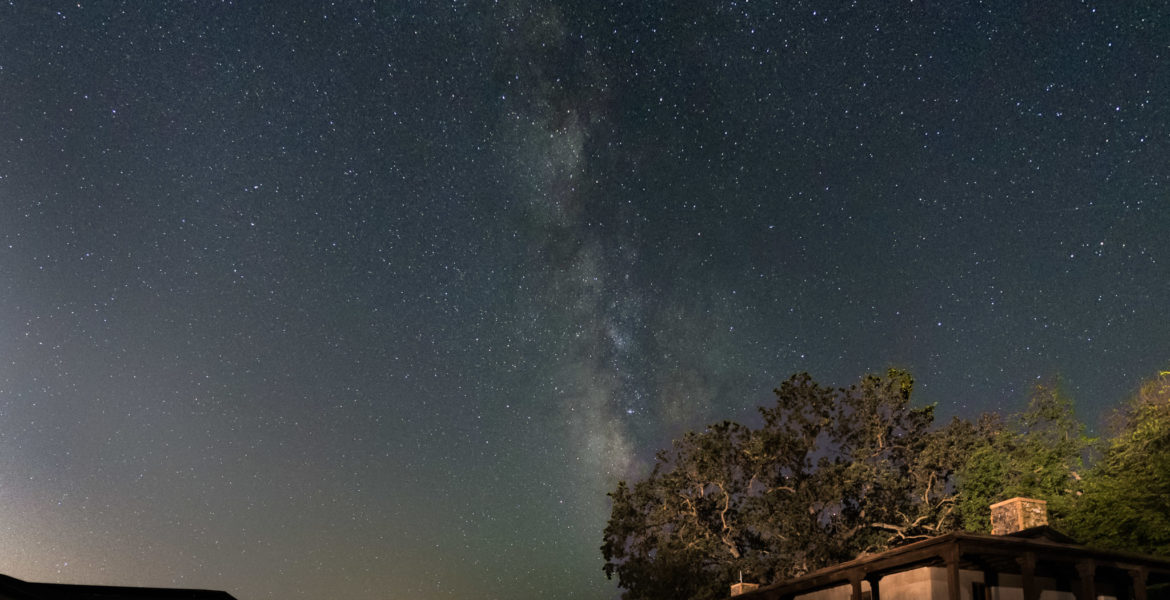LIGHT POLLUTION IS A LUMINOUS FOG THAT IS OBSCURING THE NIGHT SKY. A CHILD BORN TODAY HAS ONLY A ONE-IN-TEN CHANCE OF EVER SEEING THE MILKY WAY.
More than 1,200 people participated in the National Park Service’s (NPS) annual Summer Star Festival at Paramount Ranch this year. The highlight for many was the chance to look at the rings of Saturn and the moons of Jupiter through telescopes. The International Space Station received applause and cheers when it passed overhead—briefly the brightest thing in the sky. Many who attended the event may not have known how fortunate they were to see the Milky Way that evening, how blessed they were to see any stars at all.
According to Travis Longcore, the event’s special guest speaker, a child born today has only a one-in-ten chance of ever seeing the Milky Way. “The ability to see the stars is going away,” he said.
Longcore, the science director for the Urban Wildlands Group and a USC professor, has studied the ecological effect of light pollution on a wide range of organisms.
He told his audience at the event that while the Santa Monica Mountains are blessed with the darkest skies the Los Angeles area, light pollution from the city impacts the view, even with the mountains as a barrier.
On a clear, moonless night, he explained, as many as 2,700 to 5,300 stars are visible. In a truly dark sky, 11,000 stars can be seen. For most of L.A. the number, at most, is closer to a couple of hundred with the Milky Way entirely obscured from view. “The beach at Santa Monica is the worst,” he said.
Longcore said that much of the data we have on light pollution comes from NPS’s Night Sky Team, founded in the late 1990s to measure star visibility at NPS sites all over the country. Their research reveals that, as urban sprawl edges deeper into the wildland interface, light pollution impacts an ever-increasing swath of the night sky.
“In the middle of the Mojave, there is so much light from Las Vegas, 70 km away, that the human eye doesn’t adapt to the dark fully,” Longcore said. “Think about what that means to us. It’s a luminous fog that is obscuring the night sky.”
It’s not just the brightness but the color of the lights,” Longcore said. He explained that blue light has been shone to interfere with the brain’s production of melatonin, the hormone that regulates the body’s circadian rhythm. And it’s not just a problem for humans. The impact on wildlife can be many times worse because light pollution affects everything from migration and mating, to communication, protection from predators and predators’ ability to hunt their prey.
“Life evolved with a natural pattern of day and night that has always been completely predictable,” he said. “Animals that depend on the dark of the new moon now face full moon lighting conditions every night,” and that desert environments are especially vulnerable to light pollution. Almost every ecosystem on earth—from deep forest to mountain top is increasingly impacted.
“Satellite images (compared with radio collar mapping) show big predators like mountain lions chose the darkest corridors to travel,” Longcore said. “When we build the Liberty Canyon wildlife overpass, it needs to be a dark bridge as well as a land bridge.”
He described the effort on Kauai to save the endangered shearwater bird. “The shearwaters follow the lights,” he said. “One town moved Friday Night Lights at the high school to Saturday afternoons to protect the birds from the lights.”
Other light pollution problems are more difficult to address. Longcore said that fish, like salmon, that are drawn to lights can become confused, thus interfering with spawning. Birds that migrate at night are driven off course by manmade lights, and are killed in the thousands by striking lighthouses, oil rigs, industrial facilities and even cruise ships. Newly hatched sea turtles are programed to travel to the brightest horizon, which is no longer the ocean horizon.
Worldwide efforts to curb light pollution include campaigns to change or modify lighting fixtures to ensure they are downward facing and shielded and to shift away from bright blue lights to warmer low intensity LED lights.
Longcore confirmed that these are things every homeowner can do on their own, but that the big changes required—like highway lighting—can only come through political action.
“Get involved,” he said.
Information on how to get involved is available at the International Dark-Sky Association website: darksky.org.
For upcoming events in the Santa Monica Mountains, including future star festivals, visit: http://samofund.org/calendar.


